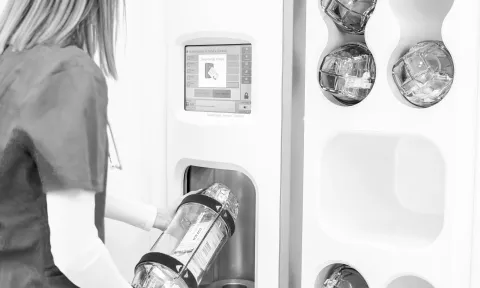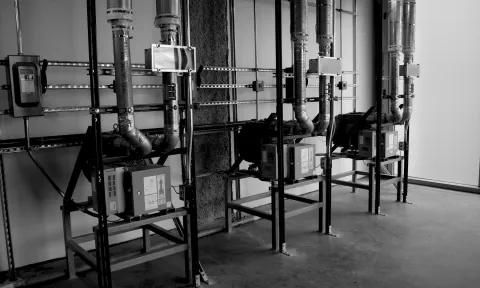You might also be interested in this

Customer Pledge

Superior Transport Automation

Pneumatic Tube System Components


Demand For Energy Is Poised To Rise
Reading Time: 4 min.
10/23/2024
Given the nature of the services provided, achieving energy efficiency in hospitals has always been a challenge. Lighting, HVAC, security, elevators, medical equipment, cleaning and sterilization systems, and operating rooms are active 24/7 365 days a year. Unsurprisingly, the Environmental Protection Agency (EPA) ranks inpatient health as the second largest commercial energy user in the U.S., representing 10% of all commercial energy usage each year.
Waste has also been an ongoing issue for hospitals. According to the EPA, up to 30% of energy is used unnecessarily by hospitals and other buildings.
All this energy usage and waste comes with a price tag. The average inpatient facility spends about $72,000 per month for electricity.
Leadership is waking up to the need to reduce waste and improve hospital energy efficiency.
The need for hospitals to more efficiently handle energy use goes hand-in-hand with the need to reduce carbon emissions. Healthcare providers are recognizing the benefits of updating old, inefficient systems and processes within their facilities and bringing them into compliance with the latest energy and green initiative guidelines.
Hospitals are recognizing the benefits of adopting green initiatives. BCC Research has forecasted the green hospital market to reach $14 billion by 2027. Green practices within hospitals are now covering a wide range of areas, from the use of eco-friendly building materials to waste management practices to energy efficiency.
Hospitals are also getting involved in voluntary efforts such as The Health Sector Climate Pledge, introduced by the U.S. Department of Health and Human Services. Taking the pledge commits the healthcare provider to participate in efforts to meet the goal of reducing greenhouse gas emissions by 50% by 2030 and net zero emissions by 2050. While it is a voluntary program, it includes an aggressive schedule of goals and milestones.
Participating in green initiatives may also make economic sense for hospitals. According to the Decarbonization and Resilience Initiative, starting in 2026, the CMS may begin asking hospitals to report emissions. Those who are already taking steps to greenify will be a step ahead and find it easier to integrate these new requirements into their existing program.

Leaders will continue to be challenged to achieve greater hospital energy efficiency in ways that do not compromise the quality of care for their patients. They will need to do so in an environment demanding a more patient-centered approach.
These challenges, however, must be addressed sooner, rather than later, as regulations tighten and mandates replace many of the voluntary initiatives. Hospital leaders who are able to rise to these challenges will have a unique opportunity to make a significant contribution to a greener, more energy-efficient world for their patients today and for future generations.




Contact our knowledgeable specialists to discover how our range of automation solutions can boost efficiency, reduce costs and enhance care at your healthcare facility.
Contact us